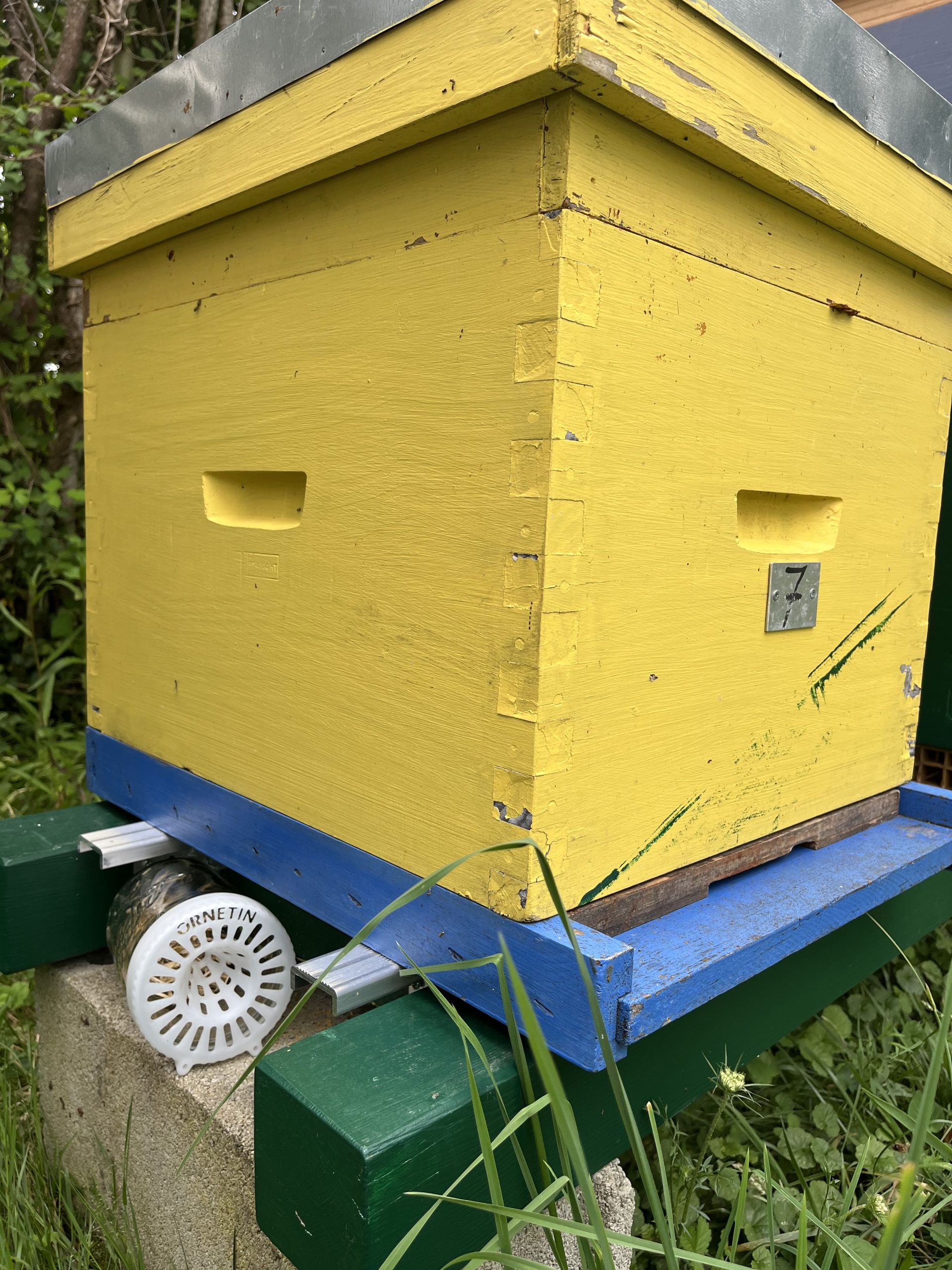Trapping Asian hornets – at the apiary – requires following some good practices. What follows is mainly focused on summer and autumn trapping. If your intention is to capture founders in spring go straight to the last section of this post.
Position the traps correctly
The Ornetins must be positioned around the hives. Even distribution is recommended to reduce pressure on the entire apiary.
They are best placed under the hives if you have the possibility, and in the shade to avoid roasting the hornets in the jar (to attract their fellows we want them alive as long as possible).
Positioning Ornetin on the side of the hives and at the ends of the rows are effective solutions.
Never position Ornetin on the front of the hives. The hornets that navigate this path no longer see them, they are so attracted to the bees!!

Example of positioning traps on an apiary
Here is an example of distribution around the apiary:
On trapping duration and trap effectiveness
The effectiveness of trapping will increase with the arrival of new hornets in the jar. They will create buzz and attract others. But the effectiveness reaches its maximum after a few days: when the hornets begin to die and give off odors that are no longer attractive. This is when the traps must be harvested to empty and clean them.
The cleaning phase is very important. It is in fact at this moment that we must eliminate all the bad odors which had reduced the effectiveness of the trap. Ornetin is made of plastic and glass. Two materials that wash perfectly. They therefore return, each time, to service as on the first day. You can learn more about Ornetin and why it is superior for trapping hornets, as well as how it differs from other trapping systems, by reading the article Why Ornetin is different?
Conflicts with bees?
People often ask us if syrup bait does not attract bees. The answer is: possibly YES. But on the one hand, they can come out of the trap through any of its multiple openings. But what greatly contributes to selectivity is the intrinsic aspect of the container design: the multiple holes allow a clear view of the container and a bee in front of this welcoming committee will have little desire to explore this food source!! Therefore, unless the priming and positioning are poorly managed (bees arriving first) there will be no conflict because the hornets quickly take their place.
Selective Trapping of Founding Queens with Ornetin
In spring 2024, our focus was on selectively trapping founding queens using Ornetin, known for its efficacy in trapping Asian hornets. Despite the challenges of attracting queens and variable weather conditions, our strategic approach and use of recommended baits resulted in capturing 38 queens by May 9. We also captured 4 bees, 2 wasps, 7 flies, 42 midges, and 133 ants. This campaign highlights our commitment to refining trapping techniques, crucial for ongoing efforts in apiary management and pest control. For further insights into trapping strategies in apiaries and a summary of trapping, read Founding Queens Trapping Summary.
Are you trying to capture queen founders?
Trapping Asian hornet queen founders in spring and it is a different approach in summer with the worker hornets. If you are interested in capturing founder queens, you should check our article Spring trapping. For a more applied use-case you can also read Founding Queens Trapping Summary about the spring 2024 campaign where our focus was on selectively trapping founding queens using Ornetin, known for its efficacy in trapping Asian hornets.
